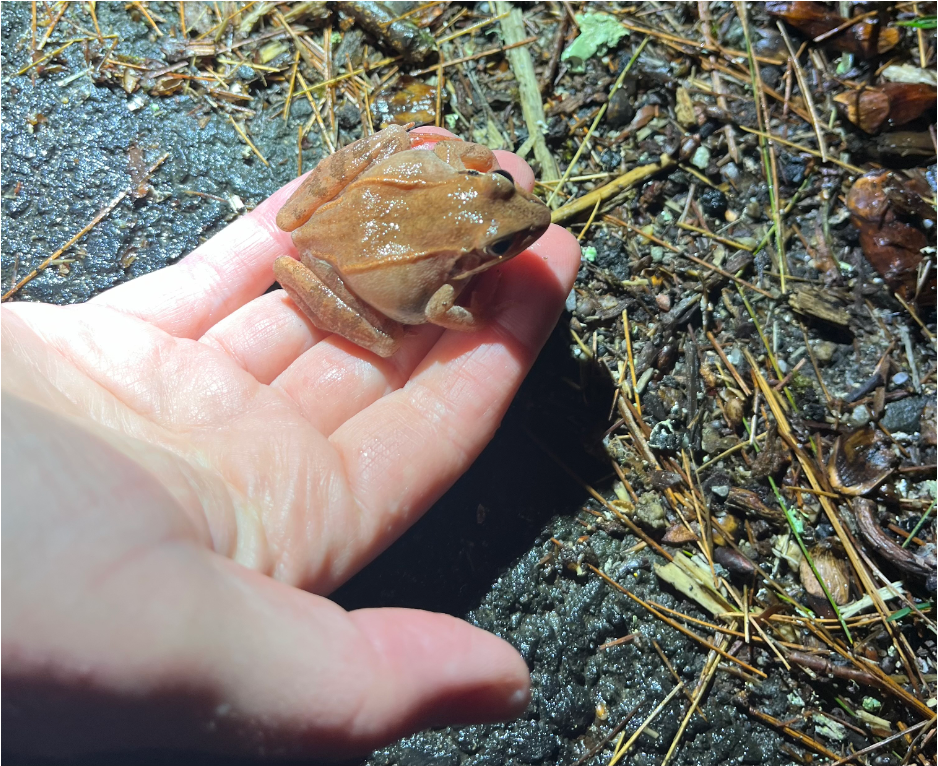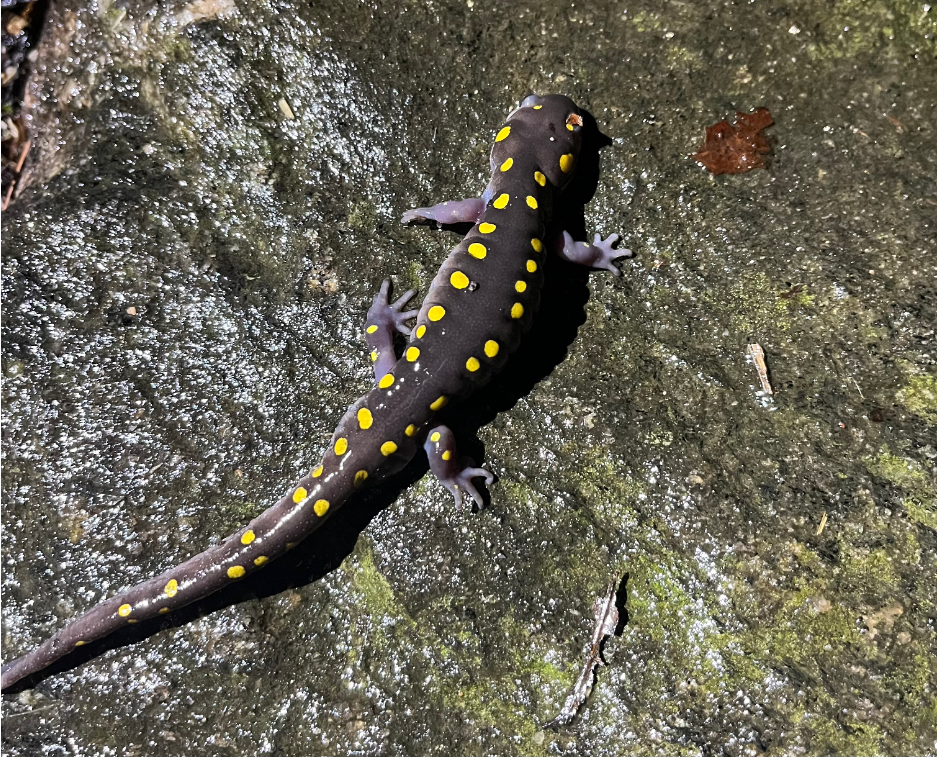After the sun went down on February 28, a wet and unseasonably warm evening, several local residents put on rain gear, head lamps, and reflective vests to report for Amphibian Crossing Brigade duty. This was the earliest such night of assisting road crossings of frogs and salamanders seen in the area since volunteers were first organized by Acton resident Amy Green. Green, who serves on Acton’s Conservation Commission and also works as the Town of Littleton’s Conservation Agent, has curated an email distribution list of 185 volunteers who head to crossing locations in Boxborough, Acton, and the Acton/Littleton line when the weather is favorable for amphibians to make their way to breeding habitats that are often located on the other side of busy roads. After the evening tallies were sent to Green, an email update went out, announcing that more than two hundred amphibious travelers had made it safely across the roads where volunteers were working.

Each year, in late winter or early spring, on the first rainy evening when temperatures are above 40 degrees Fahrenheit, spring peepers, wood frogs, spotted salamanders, and other amphibian species emerge from their winter refuge in the forested uplands to trek to vernal pools to mate and lay eggs. Vernal pools are temporary bodies of water that dry out in the hot summer months, making them unsuitable for fish that would feed on the egg masses and thus a safe place for tadpoles and larvae. This mass migration of amphibians is often referred to as “Big Night,” and the evening of March 6 more closely fit the bill for this moniker when volunteers crossed nearly 700 critters!
Especially exciting is when a Jefferson or Blue-spotted salamander is crossed; these species are listed as “Species of Special Concern” in Massachusetts.

When the eggs hatch, the young salamanders and frogs will metamorphose, growing legs and developing lungs. Then as the vernal pools dry up, the juveniles head into the woods and live on land until they reach sexual maturity and are ready to return on a Big Night in the future.
Alissa Nicol is a frequent writer for the Acton Exchange and is a Select Board member in Acton.
